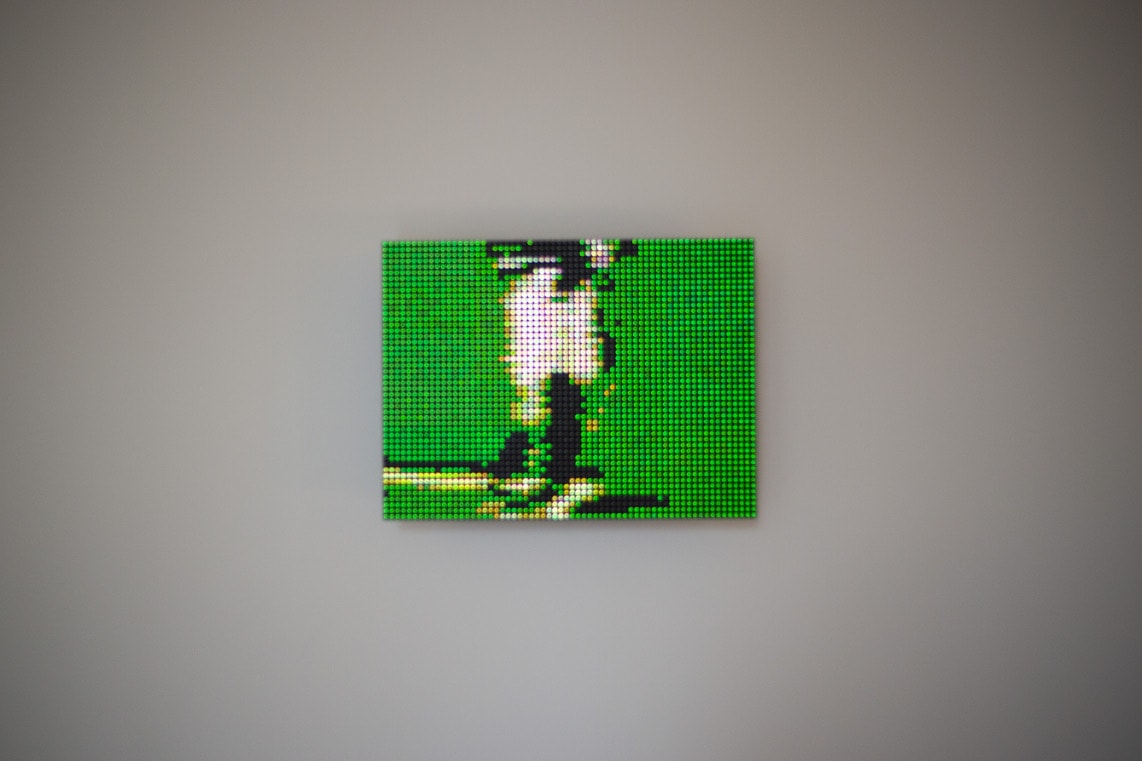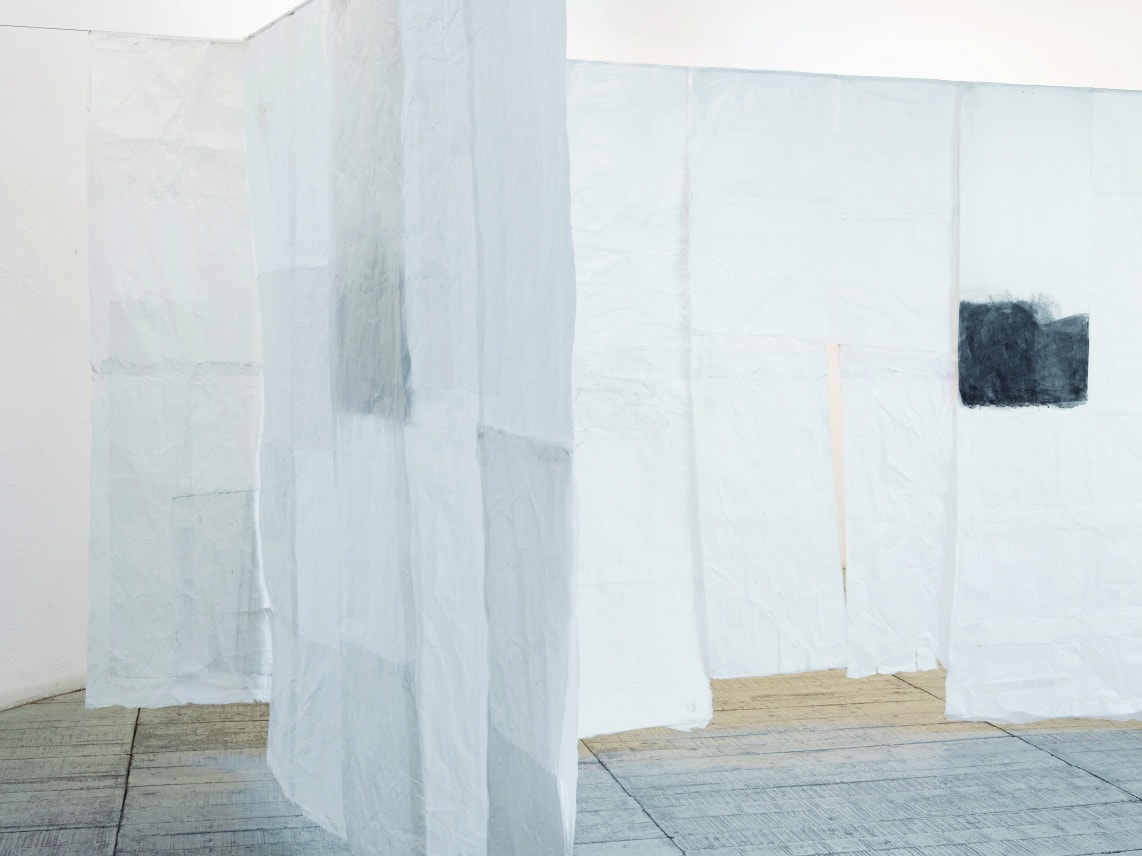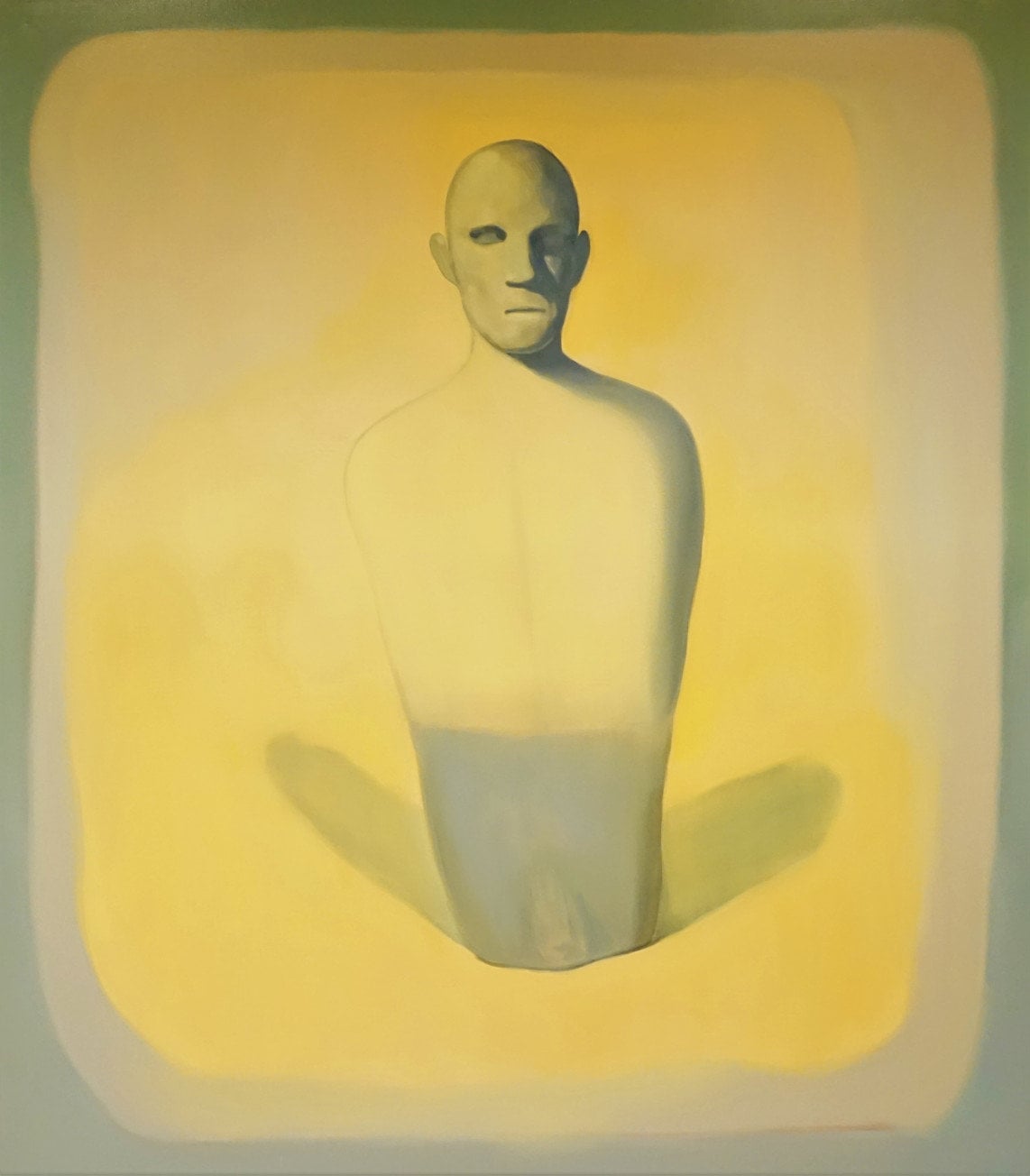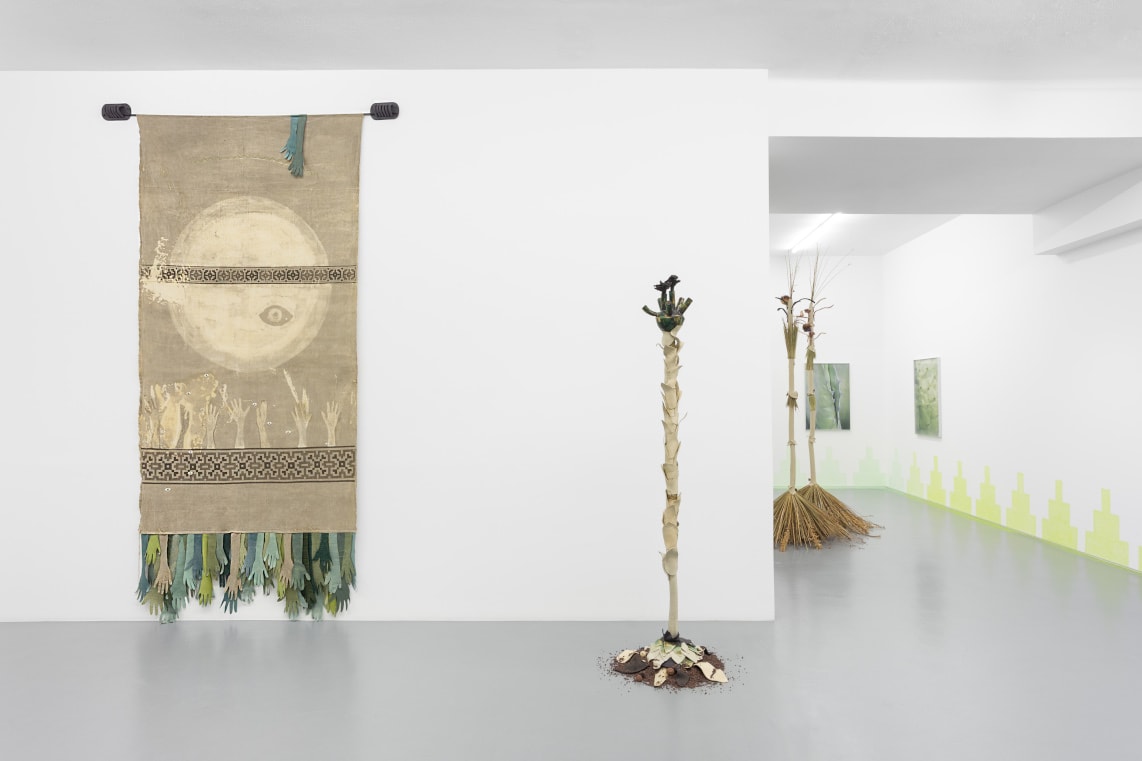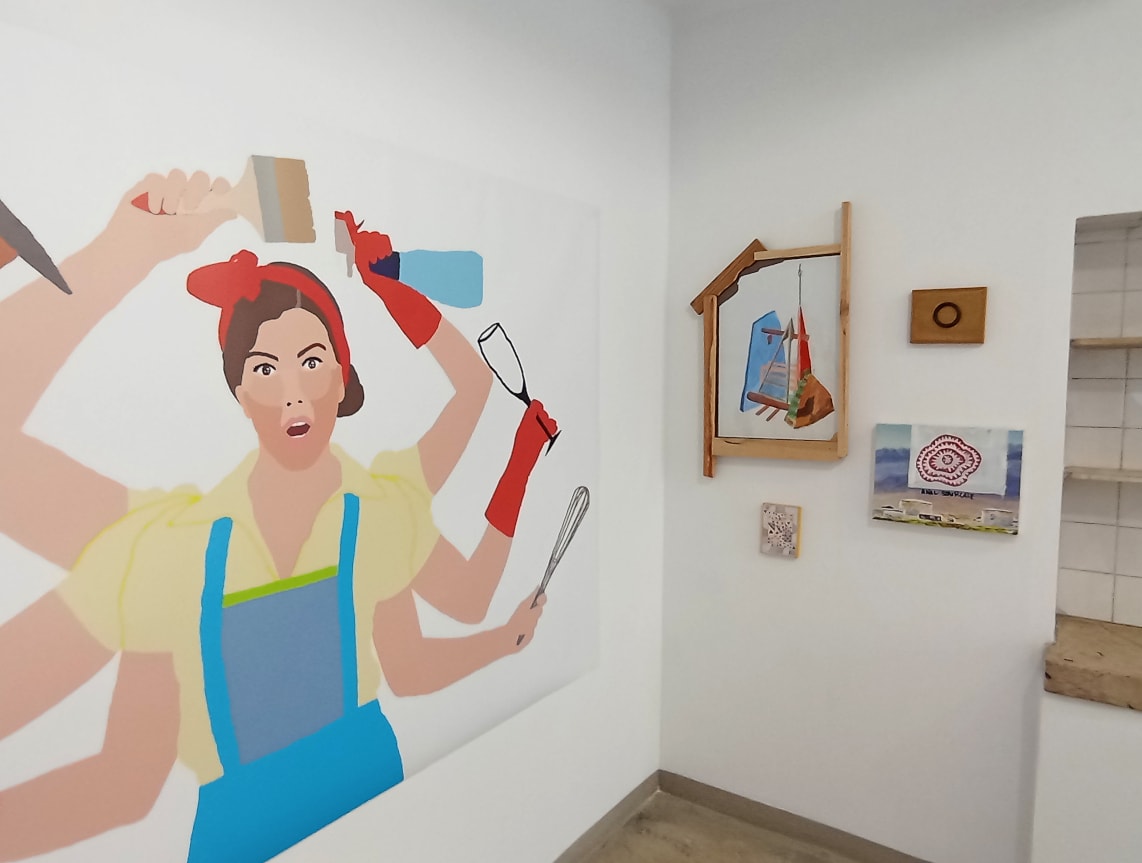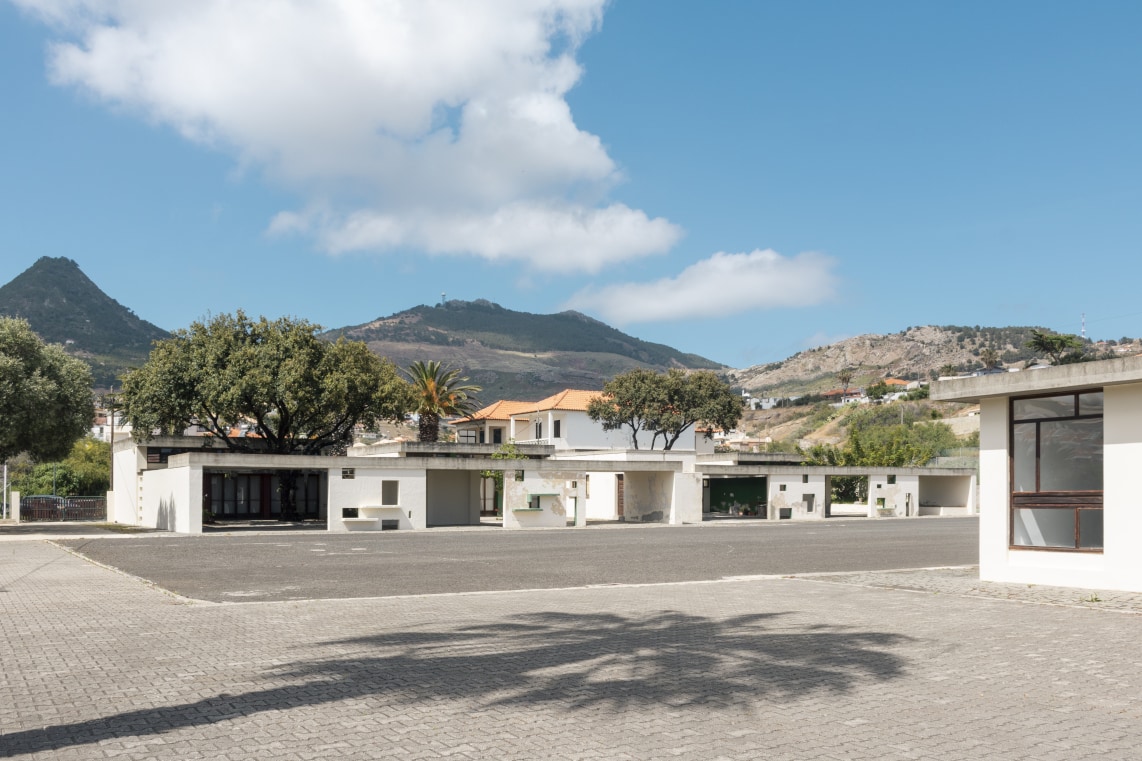Rui Calçada Bastos understands how important secrecy is. The envelope as a wrapping, of a latent content, tells us nothing – it’s a façade. Many times, we don’t even see it here – lights project it, glass and photographs suggest it, like a spectre. When it does appear, it is in a delicate situation: suspended on a mail scale or supported by a compass frame, with a sharp spike, pointing northwards and to our gaze. Ducking down to open it is impossible. The spike would blind us. What enigma is this?
Perhaps it is the lack of it, the dread of aphasia, the anxiety of penetrating an object and having it tell us nothing, no purpose and no content – it just mirrors us and displays whatever we want it to signify. This reflection is literal in Bullet Point, a small correspondence desk, covered by the suggestion of an envelope in a mirrored glass, which appears reshaped in Love letter, love letter, go tell her, go tell her. Here, when we come closer, the mirror reflects us – when we wanted to unveil the secret, we see our image. Within the intimacy of the exhibition’s five works, under sultry, peripheral spotlights that make everything more intimate, the anxiety and the silent nightmare come true. This reading is perhaps due to my attempt to write a text that uselessly wants to unravel something or, more sensibly, approach it. To take her out of the nightmare and see her as a dream, an ethereal silence, ethereally suspended, may be the key to this approach. But to what extent does it reveal us the words when the envelopes are closed? False. Two of them are open. In Heavy Weightlessness (the title is in itself a contradiction), we read a message: “Still is the Unspoken Work/ The Word Unheard”. The word that says nothing, as if it were a skin. Everything is skin, lining, occlusion. According to the exhibition text, the phrase was inspired by T.S. Elliot’s Ash Wednesday, whose continuation is deleted here: “Where shall the word be found, where shall the word? /Resound? Not here, there is not enough silence”. In There are no walls between us, we see the process of constructing a message: someone digs a hole in the wall to insert a sealed envelope, where the title of the work is read on an enclosed paper. The context blasts the message. The evoked semantic transparency is broken by the actual space it is in. As in Love letter, love letter, go tell her, go tell her, where apparent envelopes unveil themselves in projections, through which we see the wall acting as a canvas. Spotlights sequentially tilted like a clock or compass. There is also mirrored glass underneath, perpendicular to the foci, making the compositions more like a computer, where an invisible email is projected (the envelope still has the Outlook icon). But nothing is revealed.
Perhaps this is an exhibition about disillusionment, apathy. What will the message writing reveal if we are willing to receive it? What do the objects evoke when we see them inside this four-walled white cube? Probably an isolated moment of contemplation, dissipated on the way out of the gallery. But if there was disappointment, it does not come to fruition: the exhibition does not abandon us. Everything is too enigmatic for us to give up. After the fourth photograph of There Are No Walls Between Us, after the envelope placed on the wall, we see only a white light illuminating the gallery wall, a rectangular focus as a ghost of another absent photograph. It was halfway through the image, just as the works were halfway through their completion. The plot builds up to close at the last second. Have we lost the North that the compass wanted to point out? The spotlight illumination makes the objects gatekeepers of serious, baroque shadows. Rui Calçada Bastos must be fond of Maria Filomena Molder: the brightness seduces us; we must decipher the shadow and drama. I don’t know. The communication breakdown is all we need to know, ultimately. We have only the possibility, the imagination of what they could want to tell us, the hope of pinning down the words. Even then, what could they reveal? The silence? Not necessarily. Silence can cloak many things. Sometimes a timid love hides a vital condition that we are too dependent to admit. A reason for being and doing. Being intelligible, everything is too passionate: the communication difficulty is guided by minutely controlled points of contact. This keeps us going and finding out.
Perhaps the exhibition wants to be that first, embarrassed, secret love letter. “How can I find a way to make you see I love you, if words don’t come easy?”.
Words Don’t Come Easy by Rui Calçada Bastos is on show at Galeria Bruno Múrias until July 23.
